Seasonal Plants
Every season and year, we plant a variety of plants that will only survive in a specific climate or temperature.
Overview of Seasonal Plants
Every season and every year, we plant a variety of plants that will survive only in a specific climate or temperature. These plants are often called “annuals,” meaning that they live for only a one-year cycle of growth and flower production; then they die. We do have “annuals” in this “seasonal plant” group along with other plants that are perennials in warmer climates but will not overwinter outside in our 6a zone at the Creation Museum. Most of the plants in this group are grown in our greenhouses located on the Ark Encounter property. The annuals are grown either from seed or from plugs (a very small plant) and the plant production is timed just right so all the flowers are ready for the summer season that begins for us on Mother’s Day.
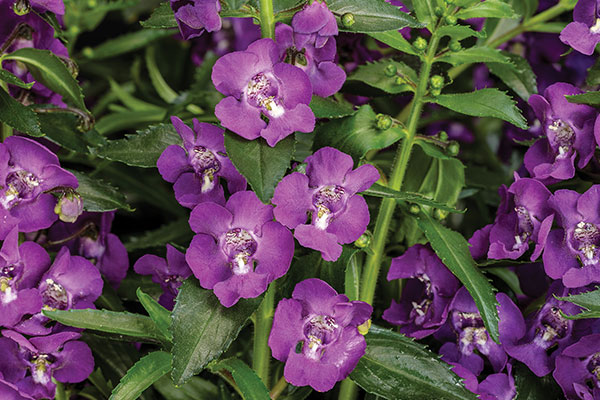
Angelface Super Blue
Common Name: Angelface Super Blue
Botanical Name: Angelonia angustifolia
Height: 40 inches
Spread: 12–18 inches
Location: Full sun
Bloom: All season, blue, purple
Hardiness zone 10–11
Elegant and tough describes Angelface Supper Blue in the landscape, in a garden border, or in a container to bring long-lasting color with very little maintenance. It is deer and rabbit resistant and not generally preferred by either. It is also self-cleaning, so no deadheading is necessary.
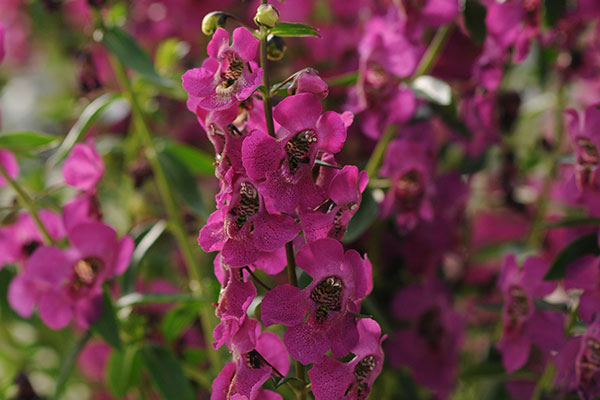
Archangel Raspberry
Common Name: Archangel Raspberry
Botanical Name: Angelonia angustifolia
Height: 14 inches
Spread: 12 inches
Location: Full sun
Bloom: Late spring to late summer, raspberry
Hardiness zone down to 40 degrees
Archangel Raspberry is delicate and tough in the landscape, in a garden border, or in a container to bring long-lasting color with very little maintenance. It is deer and rabbit resistant and self-cleaning, so no deadheading is necessary.
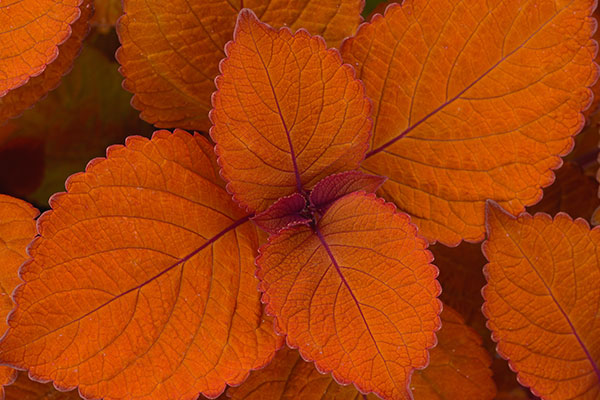
Campfire Coleus
Common Name: Campfire Coleus
Botanical Name: Solenostemon scutellarioides
Height: 14–28 inches
Spread: 18–24 inches
Location: Part shade, sun
Bloom: Grown for foliage, orange
Hardiness zone 10–11
Coleus is generally grown for its wide variety of foliage. To keep the foliage in top shape, pinch off the blooms as they appear to promote a fuller growing plant. Campfire features glowing orange foliage and proven performance in the landscape in full sun and part shade.
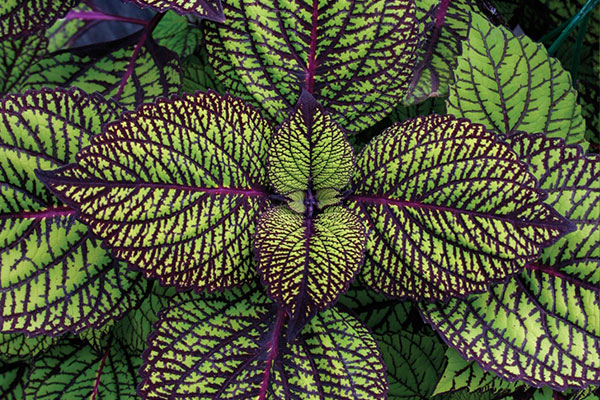
Fishnet Stockings Coleus
Common Name: Fishnet Stockings Coleus
Botanical Name: Solenostemon scutellarioides
Height: 36 inches
Spread: 12–24 inches
Location: Part shade
Bloom: Grown for foliage, green burgundy
Hardiness zone 10–11
Coleus is generally grown for its wide variety of foliage. To keep the foliage in top shape, pinch off the blooms as they appear to promote a fuller growing plant. Fishnet Stockings has striking green and burgundy variegation and is normally a more shade-loving variety.
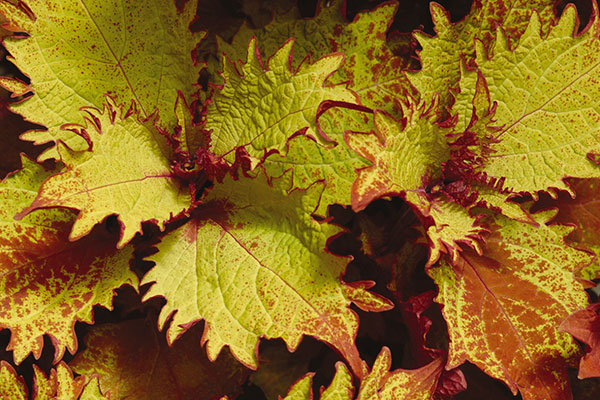
Henna Coleus
Common Name: Henna Coleus
Botanical Name: Solenostemon scutellarioides
Height: 36 inches
Spread: 16–24 inches
Location: Part shade to sun
Bloom: Grown for foliage, chartreuse burgundy
Hardiness zone 10–12
Coleus is generally grown for its wide variety of foliage. To keep the foliage in top shape, pinch off the blooms as they appear to promote a fuller growing plant. Henna is a unique chartreuse to copper color with a dark burgundy underside. The foliage is also serrated and has a very uniform growth habit.

Redhead Coleus
Common Name: Redhead Coleus
Botanical Name: Solenostemon scutellarioides
Height: 48 inches
Spread: 16–36 inches
Location: Part shade to sun
Bloom: Grown for foliage, red
Hardiness zone 10–12
Coleus is generally grown for its wide variety of foliage. To keep the foliage in top shape, pinch off the blooms as they appear to promote a fuller growing plant. Redhead has very bright leaves, a very true red color. They complement and contrast many other plants in full sun and shade.

Wasabi Coleus
Common Name: Wasabi Coleus
Botanical Name: Solenostemon scutellarioides
Height: 36 inches
Spread: 16–28 inches
Location: Shade to part sun
Bloom: Grown for foliage, chartreuse
Hardiness zone 10–11
Coleus is generally grown for its wide variety of foliage. To keep the foliage in top shape, pinch off the blooms as they appear to promote a fuller growing plant. Wasabi’s serrated chartreuse leaves hold their brilliant color without fading. They are low maintenance, high-impact plants.

Big Dipper Elephant Ear
Common Name: Big Dipper Elephant Ear
Botanical Name: Colocasia esculenta
Height: 3–6 feet
Spread: 3–4 feet
Location: Full sun to part shade
Bloom: June, yellowish white
Hardiness zone 7–10
Big Dipper has tall, purple-black stems that hold a large grey-green leaf horizontally before they mature. This unique effect allows the leaf to hold quite a lot of water. When it is full, it dumps the water then stands back horizontal to catch more. Fascinating! This elephant ear also spreads with snake-like tubers that run above ground, adding another interesting feature. This variety is more difficult to overwinter outside in our 6a plant zone, so we usually collect some of the tubers and pot them for the next season.
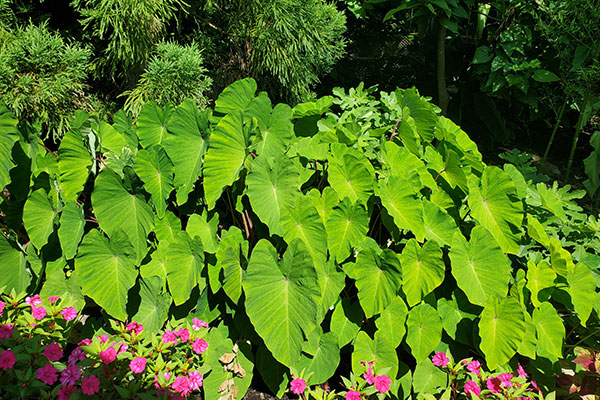
Pink China Elephant Ear
Common Name: Pink China Elephant Ear
Botanical Name: Colocasia esculenta
Height: 3–7 feet
Spread: 3–8 feet
Location: Full sun to part shade
Bloom: June, yellowish white
Hardiness zone 6–10
This hybrid variety of elephant ear has bright pink stems and medium green leaves with a pink dot in the center of the leaf, adding tropical color to any garden. This may be the cold-hardiest variety of elephant ear available in commerce. Pink China can and does tolerate our zone 6a plant zone with a layer of mulch as a winter protection. This is an easy-to-care-for tropical plant for colder areas that increases in size via rhizomes. Warmer climates may need to use control methods to limit the increase in plant size.
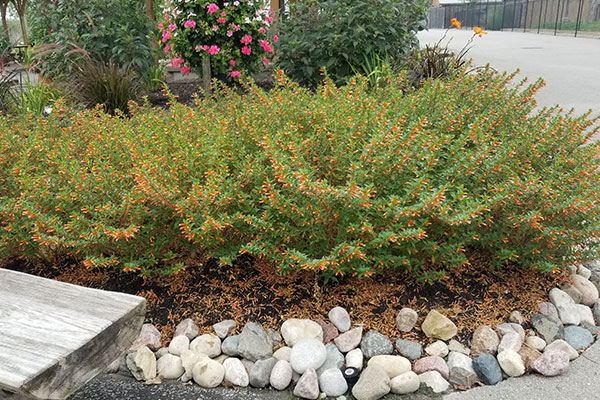
Vermillionaire Firecracker Plant
Common Name: Vermillionaire Firecracker Plant
Botanical Name: Cuphea hybrid ‘cuper’
Height: 18–36 inches
Spread: 12–24 inches
Location: Full sun
Bloom: Planting to frost, orange
Hardiness zone 8–11
Hummingbirds are really attracted to this plant! Like all Cuphea, Vermillionaire loves the sun and heat. It will grow in some shade but will not flower as abundantly and may become “leggy.” This is an annual for us at the Creation Museum, but in some warmer climates, it is considered a perennial.
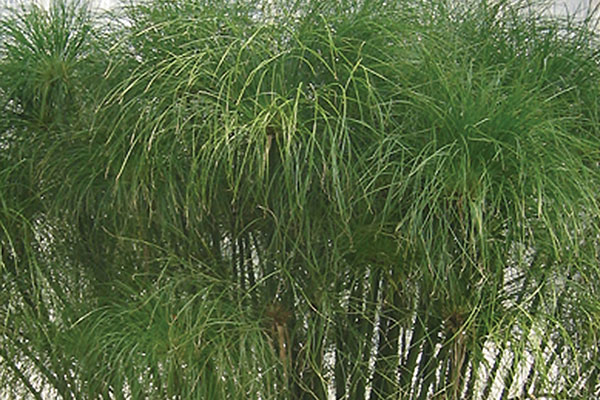
King Tut
Common Name: King Tut
Botanical Name: Cyperus papyrus
Height: 72 inches
Spread: 36–48 inches
Location: Part sun to full sun
Bloom: Grown for foliage, green
Hardiness zone 10–11
As you may already be aware, Papyrus has multiple uses. It is used in making boxes, mats, ropes, shoes, hats, and clothing. The Egyptians used papyrus to manufacture paper from the long and thick stalks, green outside and full of pith. The long strips of pith were removed and glued together, then pressed and dried. Papyrus is a seasonal plant for zone 6a, which we are in. It likes a warmer climate for year-round growth.

Vertigo Purple Fountain Grass
Common Name: Vertigo Purple Fountain Grass
Botanical Name: Pennisetum purpureum
Height: 96 inches
Spread: 24–36 inches
Location: Part sun to full sun
Bloom: Grown for foliage, black purple
Hardiness zone 8–11
This grass will beautify your garden all summer long while holding its striking black/purple color. It is large and could reach 8 feet, so keep that in mind when you pick a spot for it. In most areas, including ours, it is considered an annual plant, so it will not survive over the winter. Once it turns brown in the fall, you can cut it back or leave it for winter interest until the spring.

Sunpatiens Compact Electric Orange
Common Name: Sunpatiens Compact Electric Orange
Botanical Name: Impatiens x hybrid
Height: 36 inches
Spread: 8–24 inches
Location: Part sun to sun
Bloom: Planting to frost, orange
Hardiness zone 2–11
Compact Electric Orange is a dense, mound-forming flower in the Sunpatiens family. The orange is electric, and the plants flower profusely from late spring to the first frost with little extra attention required. No deadheading necessary! They will thrive in most environments, and they are perfect for borders, beds, or containers.
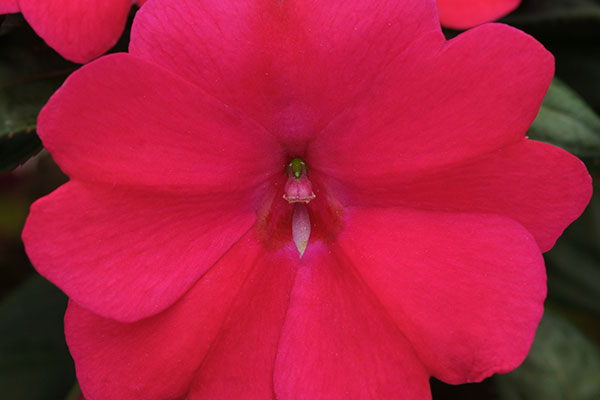
Big Bounce Cherry Impatients
Common Name: Big Bounce Cherry Impatients
Botanical Name: Impatiens hawkeri
Height: 30 inches
Spread: 24 inches
Location: Part sun
Bloom: Planting to frost, cherry
Hardiness zone 10–11
Big Bounce Cherry will give you an abundance of blooms with dark spots around the center. They bloom from spring planting until the first frost. The pointy leaves also remain green throughout the season. Big bounce Cherry is a dense herbaceous annual with a mounded growing habit.

Big Bounce Lilac Impatients
Common Name: Big Bounce Lilac Impatients
Botanical Name: Impatiens hawkeri
Height: 30 inches
Spread: 24 inches
Location: Part sun
Bloom: Planting to frost, lilac, pink
Hardiness zone 10–11
Bounce Lilac will give you an abundance of blooms with dark spots around the center. They bloom from spring planting until the first frost. The pointy leaves also remain green throughout the season. Big bounce Lilac is a dense, herbaceous annual with a mounded growing habit.

Margarita Sweet Potato Vine
Common Name: Margarita Sweet Potato Vine
Botanical Name: Ipomoea batatas
Height: 10 inches
Spread: 48–60 inches
Location: Part sun to sun
Bloom: Grown for foliage, chartreuse
Hardiness zone 8–11
Margarita is a vigorous vine with a vibrant growth habit that trails and mounds. The leaves are bright chartreuse, and they hold their color all season. This plant is heat tolerant and performs well in full sun with no deadheading required.

Lantana Confetti
Common Name: Lantana Confetti
Botanical Name: Lantana camara
Height: 36 inches
Spread: 12–15 inches
Location: Full sun
Bloom: Planting to frost, pink, purple, yellow
Hardiness zone 9–11
Incredible, brightly colored flower clusters with pink, yellow, and purple bloom abundantly all summer long. These are heat tolerant, deer resistant, and attractive to butterflies and hummingbirds. Great for mass plantings or containers.
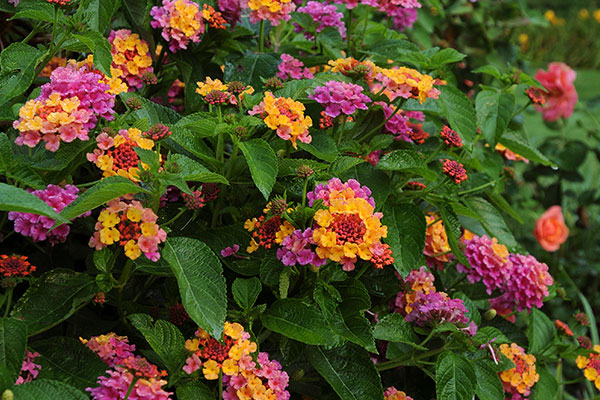
Lantana Landmark Sunrise Rose
Common Name: Lantana Landmark Sunrise Rose
Botanical Name: Lantana camara
Height: 20 inches
Spread: 12–24 inches
Location: Full sun
Bloom: Planting to frost, pink, purple, red, yellow
Hardiness zone 9–10
Brightly colored flower clusters cover mounds of dark green scented leaves. These heat-tolerant plants are deer resistant and attract butterflies and hummingbirds. Great for mass plantings or containers.
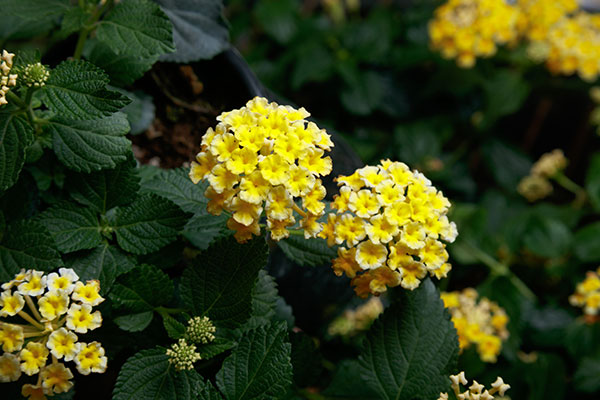
Lantana Landmark Yellow
Common Name: Lantana Landmark Yellow
Botanical Name: Lantana camara
Height: 20 inches
Spread: 12–24 inches
Location: Full sun
Bloom: Planting to frost, yellow, yellow/white
Hardiness zone 9–11
Brightly colored yellow flower clusters cover mounds of dark green scented leaves. These heat-tolerant plants are deer resistant and attract butterflies and hummingbirds. Great for mass plantings or containers.
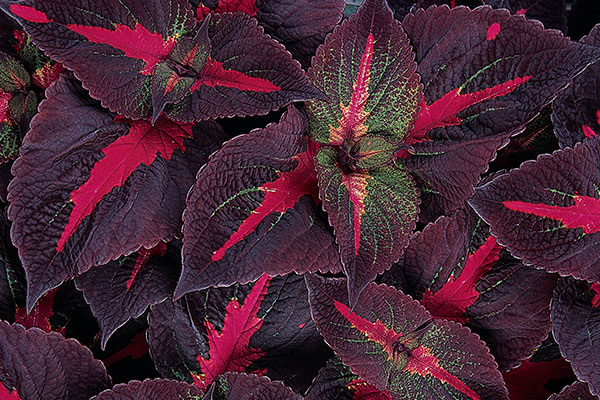
Perilla Magilla Purple
Common Name: Perilla Magilla Purple
Botanical Name: Perilla frutescens
Height: 36 inches
Spread: 12–18 inches
Location: Shade, sun
Bloom: Grown for foliage
Hardiness zone 10–11
This is a striking plant featuring coleus-like foliage, but it is extremely heat and cold tolerant. The serrated, pointy leaves will add contrast to your garden display, or you can add them to a mixed container. Performs well in sun or shade and is considered deer resistant.
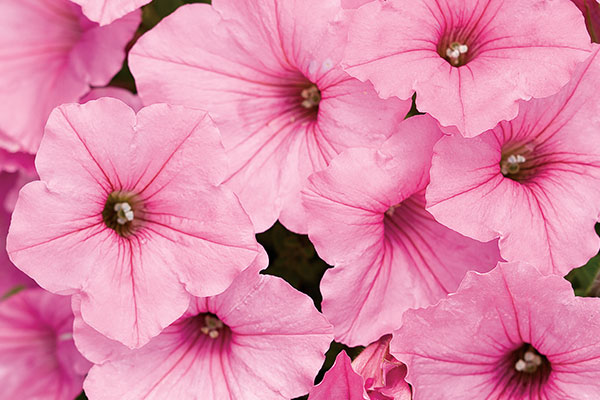
Supertunia Vista Bubblegum
Common Name: Supertunia Vista Bubblegum
Botanical Name: Petunia hybrid
Height: 24 inches
Spread: 24–36 inches
Location: Part sun to sun
Bloom: Planting to hard frost, pink
Hardiness zone 10–11
Supertunia Vista petunias are very vigorous with mounding habits that can reach up to 2 feet and will trail over the edges of baskets and containers up to 4 feet by the end of the season. These are heat-tolerant plants that are not particularly fussy, needing little routine maintenance, and they will flower all season long.

Tidal Wave Silver Petunia
Common Name: Tidal Wave Silver Petunia
Botanical Name: Petunia hybrid
Height: 22 inches
Spread: 12–24 inches
Location: Full sun
Bloom: Planting to frost, light silver
Hardiness zone 10–11
Tidal Wave petunias create mountains of color in your garden or your containers. They will grow and grow and grow into a flower–filled hedge, a seasonal groundcover, or adornment for a wooden fence. They stand up well after a hard rain, growing into full mounds of flowers with little maintenance required.

Mystic Spires Salvia
Common Name: Mystic Spires Salvia
Botanical Name: Salvia longispicata x farinacea
Height: 30 inches
Spread: 12–18 inches
Location: Full sun
Bloom: Spring, summer, blue
Hardiness zone 7–10
This impressive salvia has dark green leaves and is covered with true blue flowers. It is an excellent summer garden performer that holds its flower longer and that grows in a naturally compact form. It is considered deer resistant, and it attracts hummingbirds and butterflies.